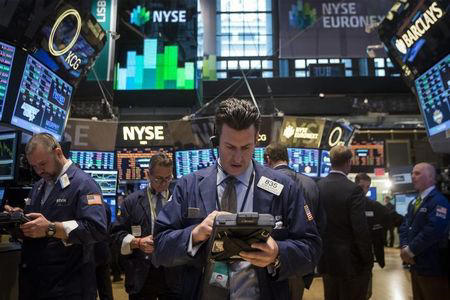As the U.S. Federal Reserve prepares to conclude its latest policy-setting meeting, the markets are abuzz with anticipation. The focal point of this event lies in the statements expected from Fed Chair Jerome Powell during the subsequent news conference. The general consensus is that the central bank will maintain its benchmark overnight interest rate. However, investors are keen to decipher any hints regarding the Fed’s stance on potential interest rate cuts, especially in light of recent economic indicators.
One such indicator is the Employment Cost Index, which showcased a robust 4.2% year-over-year increase in the first quarter. This uptick matches the previous quarter’s rise, suggesting a stall in progress towards the Fed’s 2.0% medium-term inflation target. Powell’s commentary will likely shed light on the Fed’s outlook and policy trajectory, offering insights into the likelihood and timing of any future rate adjustments.
Meanwhile, U.S. stock futures are exhibiting a cautious demeanor ahead of the Fed decision. Dow, S&P 500, and Nasdaq 100 futures are trading lower, indicating a potentially subdued start to the trading session. This subdued sentiment follows a challenging April for major indices, marked by heightened volatility driven by inflation concerns and fluctuating interest rate expectations. The upcoming Fed meeting is expected to significantly influence market sentiment, with investors eagerly awaiting any guidance on monetary policy direction.
Alongside the Fed meeting, ongoing corporate earnings releases are poised to shape market dynamics throughout the day. Companies such as Pfizer, Kraft Heinz, CVS Health, Qualcomm, and DoorDash are scheduled to report their quarterly results, adding to the day’s market activity. These earnings reports, coupled with Powell’s remarks, are likely to contribute to overall market sentiment and investor decision-making.
In the tech sector, Amazon recently announced its first-quarter financial results, exceeding market expectations. Bolstered by strong demand for cloud computing services, particularly in artificial intelligence, Amazon reported an increase in sales and a substantial rise in net income. However, the company’s revenue forecast for the current quarter fell slightly short of analyst projections, prompting a nuanced market reaction. Despite this, analysts remain optimistic about Amazon’s prospects, citing ongoing margin improvements and the continued expansion of AWS capabilities.
Consumer-focused corporations also offer valuable insights into economic trends and sentiment. McDonald’s and Starbucks recently shared their perspectives on consumer spending trends, highlighting ongoing pressures and heightened price sensitivity among customers. These observations provide valuable context for assessing broader economic conditions and consumer sentiment, offering further insights into market dynamics.
Lastly, the crude oil market is experiencing downward pressure following the release of data indicating a surprise build in U.S. crude inventories. The increase in stockpiles, coupled with robust crude production figures, has raised doubts about the sustainability of tight supply conditions. Additionally, speculation about a potential ceasefire agreement between Israel and Hamas has contributed to the bearish sentiment, alleviating concerns about potential disruptions to oil supplies in the region.
Overall, these key developments underscore the complexity and interconnectedness of global financial markets, with investors closely monitoring economic indicators, corporate earnings, and geopolitical events for insights into market dynamics and potential investment opportunities.
